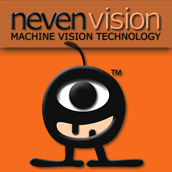This is a great time to be a brand manager and to be able to choose what type of mobile marketing campaign you wish to adopt.
From CBS MarketWatch Neven Vision's launches i-Scout platform

Based on patented recognition technology that enables mobile camera phones to "see" and recognize visual imagery.
It allows users to snap photos of products, advertisements, logos, etc., and within seconds, receive relevant content to their cell phone.
i-Scout provides a simple way to hyperlink existing real-world images, making them interactive," commented Hartmut Neven, Neven Vision CEO. "Because this is primarily a 'pull' technology, users have control over what content they want to receive, and marketers can dramatically increase their campaign ROI."
I'm not sure how the content is delivered. Via SMS ? Does taking a picture and sending to a server direct you to a website?
Is this a transfer of content or a way to surf?
The campaign sponsor simply determines what they would like to deliver to the mobile user upon recognition - ringtones, promotions, product comparisons - and then uploads this information into a secure database along with the images they would like recognized
So if I understand correctly, the images have to be preinstalled in the database.
Any end user with a camera phone can search an image using i-Scout by snapping a photo and sending it via MMS or email to a designated email address.
Lots of questions but this looks exciting. I will try to get a response from Neven Vision.
2 comments:
This sounds like what neom/mobot are doing. If neven is not a licensee of the 2-server bridge, how can they do this?
Actually has nothing to do with any kind of 2-server bridge. The user snaps a pic, then sends it in to the server via MMS short id or e-mail, or the easiest and fastest way is http using the iScout java client. The server then uses patented object recognition IP to identify exactly which "ad" it is and sends whatever graphics/text/audio and/or hyperlinks via SMS, MMS, or http that the sponsor wants.
As a purely hypothetical example, a user can snap a pic of a "Corona" beer ad, display, or a bottle label or cap, and be instnatly connected to Corona's new wap site where they can get some fun promotional stuff like new Cold Play ring tones or wall paper downloads if they register to win tickets to the upcoming Corona sponsored Cold Play concert.
A public info example....snap a pic of any NYC Subway logo or pass card and be connected to the NYC Subway mobile site with maps and train times.
It basically turns any print media into a mobile hyperlink. This makes it much more easy to navigate the mobile web by providing visual hyperlinks. A much smarter guy than me said "Hypertexting is the rock foundation the internet was built upon". This can do the same for the mobile web....visual hypertexting using any camera phone.
Japan has been using "2D bar codes" and a QR code reading client on phones to do the same thing for years. Advertisers place these 2D bar codes on lots of printed ads so that camera phones can snap a pic get connected to relevant mobile sites.
iScout makes 2D bar codes obsolete because it simply uses the image itself, making it unnecessary to put new ugly 2D bar codes on ads and products.
Post a Comment